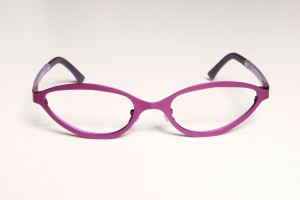By Paddy Kamen
 We’re seeing a renaissance in the ability of new ophthalmic equipment to diagnose and refract. Does this mean a bigger investment for practitioners? And how do end users benefit?
We’re seeing a renaissance in the ability of new ophthalmic equipment to diagnose and refract. Does this mean a bigger investment for practitioners? And how do end users benefit?
When something such as our ability to observe disease within the eye takes a giant leap forward, I think we can rightly say we have a paradigm shift on our hands. Such is the case with optical coherence tomography (OCT), a new technology that began as a research tool and leapt into optical practices a mere six years ago.
Tools for refraction have also taken giant strides forward with the commercialization of wavefront aberrometry. We cover this development later in this story, but first: OCT – what is exactly is it?
The word ‘tomography’ means imaging and is used in medicine to connote taking pictures of the interior of the body. OCT takes high-resolution, cross-sectional images of biological systems by measuring reflected light; it has been used to study the human eye since 1993.
Dr. Ralph Chou, professor emeritus at the University of Waterloo’s School of Optometry, says, “OCT looks through interference effects at the reflection of light off the various structures within the retina or cornea, and can resolve on the level of micrometres, so we’re looking at individual cells. It represents a quantum leap in what we are able to detect because we can actually see where changes have occurred in the living eye, without inconveniencing patients. We can now watch, monitor and see whether a treatment is working or not.”
Are OCTs becoming the new standard of practice? Chou says that while the cost of the equipment is prohibitive for many, “You must, at a minimum, be able to interpret OCT images. It is becoming the standard of practice and the level of care we have to understand and deliver. Even if you don’t have an OCT machine, you need to understand it so you can counsel the patient accordingly.”
Richard Maharaj notes that OCT is already becoming the new standard south of the border, especially in ophthalmic practice. The clinical director at eyeLABS optometry and dry eye clinic in Brampton,Ontario says, “Not many in optometry practices have OCT equipment yet, but sales are on the rise. In Ontario, where our scope of practice has changed, a lot of my colleagues are looking to purchase.”
Wavefront aberrometers also represent quite a jump in assessing vision. Ralph Chou explains: “Aberrometers project beams of light through the pupil. They don’t just measure at the very centre of the pupil but at a number of different points. Depending on the instrument, it can measure several thousand or more points within the pupil. The instrument has its own computerized system to analyze the findings and see which aberrations are dominant and which are not.”
Chou says that aberrometers are becoming more common because they have so many different uses.
Wayne Stobie, director of marketing for Innova, agrees with Chou and adds that aberrometers were originally designed to measure the eye for the most effective refractive surgery. Subsequently, they have been used for premium cataract surgery, and more recently, for wavefront-guided refractions for spectacles and contact lenses.
Maharaj takes a ‘devil’s advocate’ point of view on the subject of the relationship between measuring equipment and lenses: “The vendors who provide the equipment have also, in many cases, developed lenses to correct the aberrations they have just identified. So they’ve created their own market, which is very clever. At the same time, I have put patients through wavefront refraction and they have been astounded with the resulting quality of their vision. It definitely makes a difference to some patients. I wonder if we should recommend this all the time or just for patients with higher aberrations? »
Mayur Desai, owner of Toronto-based Downtown Eyecare Associates, purchased the Zeiss iProfiler® in 2009. Why did he make this investment? “I wanted to offer the best technology to help us provide comprehensive, hospital-grade diagnostic testing for the patient during the course of the eye exam,” he explains. “I was also aware that patients were having trouble getting access to the best testing within the traditional healthcare model. Typically they can wait up to three months for appropriate testing in Ontario.”
Desai gives the Zeiss i.Scription® Rx as an option to all his clients, informing them that it would be the best lens choice within a range of options. “What makes the lenses unique is that the optical aberration measurements give the lens an accuracy of 1/100 of a diopter. They are the most highly customized lenses available,” he explains.
Desai adds that people who have trouble reading in low-light conditions and have problems driving at night are perfect candidates for this technology. “This is because the aberrations become more problematic when the pupil is dilated. The system corrects for these types of imperfections.”
Since he initially purchased his aberrometer four years ago, Desai sees more of his colleagues investing in similar equipment, in addition to OCTs (which he also has). “They clearly want to raise the level of care in their practices,” he notes.
Ralph Chou weighs in on the benefits to the end-user obtained from the use of wavefront aberrometry: “There’s no doubt in my mind that new lens products designed from aberrometer readings will give patients the best possible correction that technology can deliver. The question is, will the patient put out the money for them?”
*****
In the rest of this article, we survey various new equipment options available to eyecare professionals (ECPs). We cover a wide range of equipment, including several OCT machines and aberrometers, plus edgers, surfacers, and even an iPad application for office use.
Innova has provided ongoing equipment consultancy and support to Canadian eyecare professionals since 1986. Their engineers work with clinicians, helping them integrate technology into their practices. Wayne Stobie, Innova’s director of marketing, is particularly excited about the new systems from Nidek.
“OCT is quickly becoming the standard of care in practices acrossCanada,” notes Stobie. “In only six years we’ve seen huge developments in the quality and quantity of OCT technology, and the instruments are now affordable for every office. Our Nidek RS-3000L boasts next-generation SD-OCT design functions, including dizzying measurement speed (53,000 Hz), 6+1 layer segmentation, and 50 X HD macula scans. In addition, the RS-3000L has intuitive reporting, incorporating normative databases to ensure that treatment decisions can be made with confidence.”
Innova also offers the OPD-Scan III, a unique, advanced vision-assessment system that combines topography, wavefront, autorefraction, keratometry and pupillometry. As a stand-alone unit, or when combined with a Nidek refraction system, the OPD-Scan III optimizes efficiencies and helps to provide excellent eyecare while growing the practice’s optical revenue through increased directed dispensing. Stobie explains: “Nidek products work and speak together to walk clinicians through the whole refraction process, whether they are measuring for corrective laser surgery (Nidek makes a laser), cataract surgery or for eyeglasses or contact lenses.”
Essilor offers new tools to help eyecare professionals measure wrap, vertex, pantoscopic angle and eye rotation centre, with the ultimate aim of creating a superior visual experience for clients. The Essilor Visioffice® is for professionals who want to showcase their skills, while providing products that are better adapted to each consumer.
Visioffice performs and records up to 20 measurements, including the real 3D position of the unique eye rotation centre for each eye. The system recommends the best lens solution for every prescription, while also giving the client personalized, interactive demonstrations of the effects of different lens options. The system also takes photos of the clients in different frames, so that they can compare them from an aesthetic viewpoint. Visioffice is designed specifically for the high-end Varilux lens specialist. The newly introduced Swing3 is a similar measuring device geared to the entry-level market.
Continuous interaction between Essilor’s lens development and software application teams ensures that the new lenses and measuring instruments that make those lenses come to life are developed in tandem, explains Michel Cloutier, national director of instruments for EssilorCanada.
Also look for Essilor’s soon-to-be-announced entry into examination equipment. “We are building a variety of products, starting with auto-refractors, and training the presentation team,” notes Cloutier.
Visionix is a Luneau company in the same family as Briot and Weco. Visionix founder, Marc Abitbol, pioneered the first wavefront product for industry applications in 1997 and the first full refraction line based on wavefront in 2009. Joel Kozlowski, North American director for Visionix, says the L80 ARK Topo/Wave+ provides a 1,500-point measurement in 10-12 seconds. The single measurement gives daytime and nighttime refraction, in addition to corneal topography data, and full ocular aberration data. Based on the ‘gold standard’ Hartmann-Shack sensor, the L80 is fully automated, adds Kozlowski. “The limitations of traditional measurement devices no longer need to constrain us. With the L80, you get a much more accurate measurement, and it is priced significantly lower than the competition.”
And from Weco, the E6 edger is the fastest retail edger today and therefore the most productive, according to Sebastian Pena-Feldmann, product manager at Luneau Technology. “Due to the smallest edging wheels in the market, the bevel edging is perfect, even on high curved lenses. And the SD technology for complex shapes is absolutely innovative and cannot be found in this capacity anywhere else in the market. While capable of the most complex types of jobs, the easy-to-use interface offers confidence and skill for the edging optician.”
Topcon presents an innovative and stylish operating experience in the new KR-1 Auto Kerato-Refractometer and the new CT-1P non-contact tonometer with built-in pachymeter. With a history of dedicated service to eyecare professionals since 1963, Topcon positions itself as the leading distributor of ophthalmic equipment and supplies inCanada. These devices prove the point. More compact than previous models, they feature fully automated operation with an easy-to-use colour touch panel, which replaces the traditional type control lever. The adjustable control panel can be positioned in any direction. These machines are designed for flexible layout and incredible space savings, especially if they are combined. They can be installed in many different positions in the examination room: side-by-side, 90-degrees, or even face-to-face.
Peripheral ocular pathologies may go undetected but for Optos®’ patented ultra-wide field digital scanning laser technology. The newest addition to the Optos family of retinal imaging devices, Daytona provides simultaneous, non-contact central pole-to-periphery views of up to 82 per cent or 200 degrees of the retina, displayed in one single capture, compared to 45 degrees achieved with conventional methods. This desktop model offers multiple wavelength imaging, including options for colour, red-free and autofluorescence with green laser light.
The Optos 200Tx™ device was designed specifically for ophthalmologists and vitreoretinal specialists. It offers multiple-wavelength imaging, including options for colour, red-free, fluorescein angiography and autofluorescence with green laser light. With its advanced features like eye steering and ResMax® central pole resolution enhancement, it helps practitioners discover more evidence of disease and guide their treatment decisions.
All images are available immediately and stored electronically for future comparison or telehealth applications, and are compatible with image management and electronic health records (EHR) systems.
CobaltDS is the name to remember for surfacing systems from Coburn Technologies. The new system is based on considerable research and development. What sets the Cobalt apart? “There are several critical differences between the new Cobalt system and other high-volume digital surfacing systems,” explains Curt Brey, vice-president of marketing and business development. “The Cobalt uses a new cold mist cutting technology, which combines the benefits of a dry cut generator with those of a wet cutting process. It therefore eliminates the need for a large, high-maintenance water reclamation system, yet it produces a surface finish that may be the best in the industry.”
The Cobalt leaves the final polished lens virtually haze-free without the need to apply hard coating for optical clarity and produces better-cut and polished free-form lens results. Brey adds that the Cobalt is ideal for ECPs who are looking to bring their lens surfacing needs in-house, and for existing lens processing labs. “This system is fast enough to support a production environment, but small enough to accommodate limited space, with a lower cost of entry than comparable systems.”
Optical practices with substantial clientele over the age of 45 can serve those clients better by offering Eschenbach Optik low vision aids. Eschenbach makes it easy to ascertain and fill a patient’s needs with their EasyVision and Low Vision Programs. As Canadian National Sales Manager Ryan Heeney points out, “Our diagnostic dispensing system finds an appropriate solution quickly, determining what device is appropriate and what level of magnification is needed. The system allows for successful patient outcomes, whether the solutions are intended to complement surgical or therapeutic treatments or in cases where the use of magnification is all that is available to help the patient accomplish their visual goals and activities of daily living.”
Eschenbach Optik has a proud history of innovation. “We have introduced a number of firsts to the marketplace, from the incorporation of diffractive lenses in magnifiers, to the creation of a patented cera-tec® hard lens coating, to the introduction of progressive readers. Our products are distinguished from the competition due to their high quality, as they are made inGermany according to ISO9001 standards. In addition, our EasyVision and Low Vision Programs are differentiated from others in the market due to the ongoing consultative support that is included with the programs.
Nikon is leading the way with the use of Apple’s iPad as a clinical device. The Nikon Imagine-i application (app) is an interactive demonstrator application and an exciting presentation platform. “With the iPad being so portable, lightweight and easy to use, it just makes sense for practitioners to use them in the office or store,” saysAngela Marsellos, director of marketing and communications. The app demonstrates the quality of Nikon products and helps eyecare professionals explain the advancement in lens technologies and show benefits in an engaging way.
“This app is for any practice that wants to set themselves apart by being able to really show patients the quality behind the products they offer. Cutting-edge, highly graphical and interactive, the Nikon app allows eyecare professionals to engage with their patients, and gives patients the information they need to make a more informed decision,” adds Marsellos.
The Nikon Imagine-i application is available as a free download on iTunes, but a password is needed to access the professional simulation tool. The password is available for purchase only through Nikon Optical Canada. Eyecare professionals will want to contact their Nikon representative to inquire about purchasing the password.
Also look to Nikon for a measurement device as an iPad-based solution, expected to be released later this year.
Western Eyecare Instruments (WECI) distributes diagnostic and other leading-edge instruments for eyecare professionals from all three disciplines. Recent products include the PLM 6100. “This is the latest auto-lensometer on the market,” says President David Black. “It makes reading the three main types of lenses easy and efficient, and is priced to accommodate even the tightest of budgets.”
The PLC 7000 is WECI’s most popular LCD flat screen auto-projector. It is more cost-effective and versatile than its predecessors, say Black, who is also happy to be selling the Potec auto-refractor keratometer. “This is fast, easy to use, and will print out the objective prescription. The patient simply focuses and the instrument does the rest. Among other things, it will refract over IOLs, read contact lenses, PD and take pictures of the anterior of the eye.”
The challenges for ECPs when considering what equipment to buy, and when, are considerable. There is no doubt a ‘salivation’ factor when presented with so many options that will save time and create better patient/client outcomes. How to choose? That is the subject for another article!











